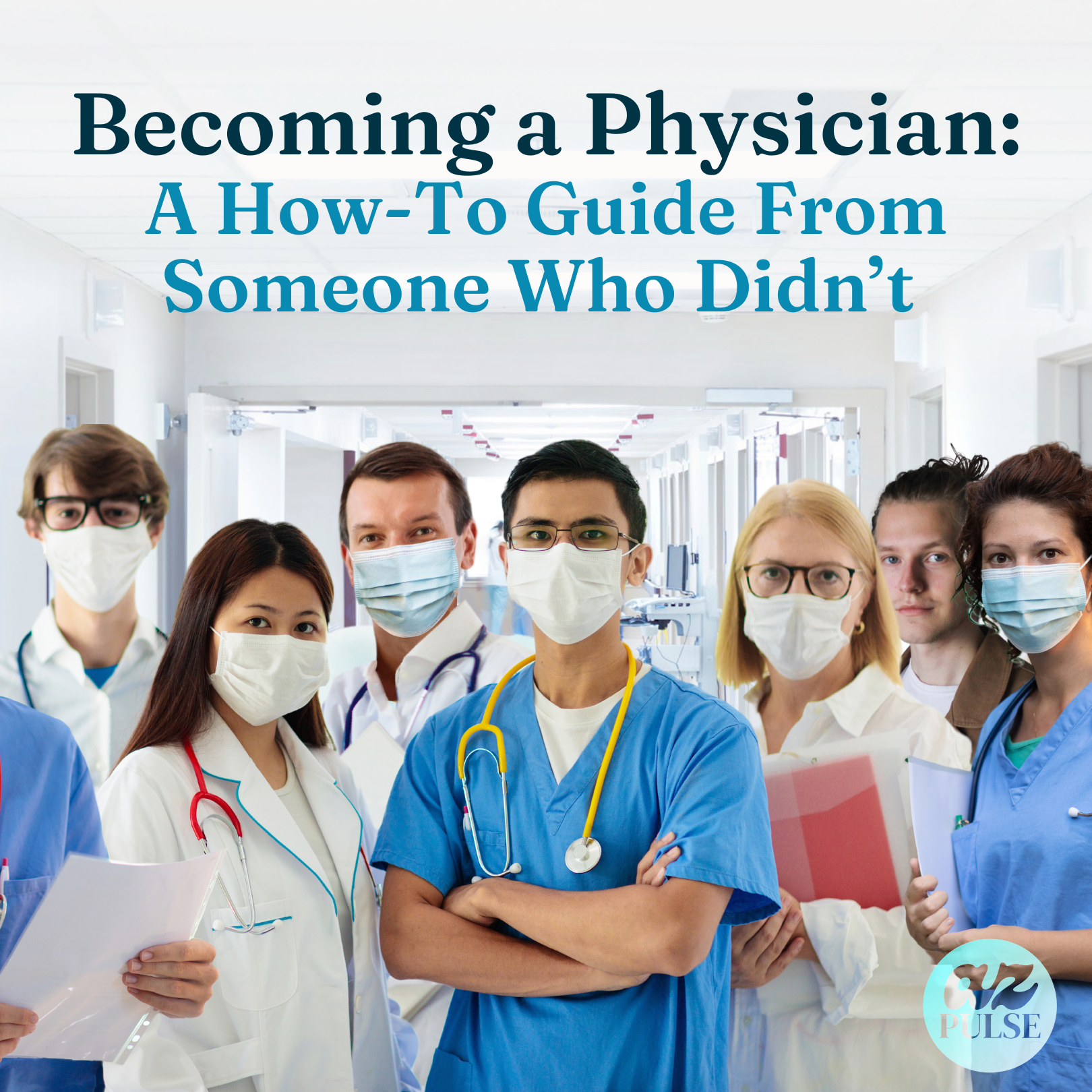
Becoming a physician is a long and difficult process but with the proper education and determination, it will only require 10-13 years of schooling plus a seemingly endless number of tests, exams, and certifications. For someone with no background in medicine, the different titles and years of additional schooling may seem convoluted and secretive. However, this couldn’t be a bigger misconception. Pursuing the practice of medicine is a devotion that takes years of discernment and hard work. For those interested, this article will break down how an undergraduate student can pursue a life as a physician.
Step One: Getting into Medical School
So, you’ve just completed your undergraduate study with at least a bachelor’s degree and completed coursework in biology, chemistry, physics, and organic chemistry. You’re done! Here’s your first patient. He needs his appendix re…. *Record scratch* Not so fast.
At this point, you may find yourself as a student diligently applying for medical school, meaning you’ve probably heard about the Medical College Test (MCAT). The MCAT is used to assess the readiness of those applying to further their education. Most students admitted into medical school perform in the top 35% nationally on the MCAT, and most have a GPA of 3.7 or higher… no pressure!
Medical school will prepare you through classroom learning and essential exposure to a real clinical environment over the course of four years. These four years are usually divided into two parts. The first two years focus on the basic sciences. You will spend time learning physiology, anatomy, biochemistry, neuroscience, history, pathology, microbiology, immunology, and pharmacology (all the ology’s). Although it may sound like a lot, this foundationary coursework is essential.

Upon completing the basic sciences, you will take the first of two licensing exams. Allopathic (MD) students must pass the United States Medical Licensing Examination (USMLE) Step 1, and Osteopathic (DO) students must take the Comprehensive Osteopathic Medical Licensing Examination of the United States of America (COMLEX-USA) Level 1. Students must pass these licensing exams to continue onto the second half of medical school, clinical sciences.
The clinical sciences require the completion of rotations in internal medicine, pediatrics, obstetrics and gynecology, neurology, psychiatry, and surgery. Again, no big deal. These clinical rotations are crucial for future physicians to be well-rounded in their knowledge and practice of medicine. You may even find one of these rotations inspiring and pick one to be your specialty. Your specialty will be the horse-blinders of the rest of your academic career, keeping your energy focused on becoming an expert in one specific area of medicine. At the end of the fourth year, it will be time to take Step 2 or Level 2 of the USMLE or COMLEX, respectively. Ultimately, it will take 82 weeks of clinical experience and a grasp of the Basic Sciences for medical students to earn their spots at graduation.

Step Two: Getting Out of Medical School
You did it! You graduated from medical school and are now a certified physician. Here is that guy with the appendix. He says he wants to keep… *Record scratch* Hold your horses… I know you’re eager, but there is more to learn!
To begin practicing medicine, medical school graduates must search for a residency program in their area of interest or specialty and be accepted into that program; this process is known as matching. Matching can be competitive and will be mostly determined by your score on the USMLE or COMPLEX. As a matched resident, you will get the opportunity to practice medicine under the supervision of an attending physician.
Once you have matched into a program (I knew you could do it!), you will spend anywhere from 3 to 7 years as a resident physician, depending on your specialty. You may think to yourself, “This is tough, but at least I am done taking exams!” How wrong you are. Physicians will have to complete and pass the USMLE Step 3 or COMLEX Level 3 before becoming licensed to practice medicine and legally care for patients unsupervised. The length of the residency program is intentionally designed to ensure that the physician can be exposed to an endless variety of patient types and situations. Again, this is to provide a well-rounded education to the physician. If you think you can’t be any more well-rounded, think again!
Step Three: Fellowship and CME (It Never Ends)
Okay, so the appendix guy wants to keep it in a jar. He won’t leave until we give it back.
At this step, physicians are now awarded the title of “attending physician.” An attending physician is someone who has completed both medical school and residency. You can be sure that, after approximately 13 years of study, an attending physician is well versed in their special focus at this stage. So, what comes next?

Many attending physicians choose to pursue fellowships (not like in The Lord of the Rings). A fellowship is a specialized educational program intended to focus even closer on a sub-specialty of the physician’s specialty. For example, a physician whose focus is surgery would pick a fellowship in a specific type of surgery, i.e., cardiovascular surgery, pediatric surgery, or the kind of surgery that removes crayons from my ears. For many complex procedures, a fellowship is required for a physician to perform the procedure unsupervised. A fellowship is a great way to learn from partnerships with skilled, specialized physicians.
Another way for physicians to go above and beyond is by collecting additional certifications, degrees, or designations (like Thanos gathering infinity stones, except for the good of society). These titles most often come from established academies or colleges like the American Academy of Pediatrics (for which the title is FAAP) of the American College of Cardiology (which grants the title of FAAC). The requirements for receiving such titles vary depending on the institution.
Regardless of what route a physician chooses post-residency, they must complete renewal coursework or exams known as continuing medical education (CME). Each state outlines different criteria for CME credits. In Arizona, the requirement is to complete 40 hours of CME credits per licensure period every two years. Physicians must obtain the required number of CME credits to remain licensed to practice medicine. This requirement ensures that physicians stay well-versed within their specialty and can administer care in line with the most current standards of care.
Conclusion: You Are Now a Physician, and No One Can Stop You!
Congratulations, you are now a physician! I never doubted you for a second. This step-by-step informative article just scratches the surface of all that is in the world of medicine. Students spend countless hours studying, practicing, failing, trying again, and perfecting before they can even take their first exam. The years of additional schooling are critical to ensuring that every physician is ready to provide the best possible medical care. So, when I got my appendix removed, I was 100% confident that my pointless little organ was in great hands — even if they wouldn’t let me keep it. Hopefully, this article has revealed from behind the curtain just what it takes to become a physician.
Author: Thomas Kushner, Arizona Pulse Staff





